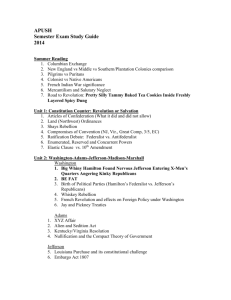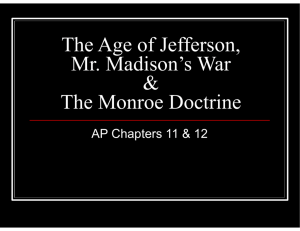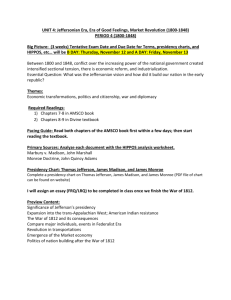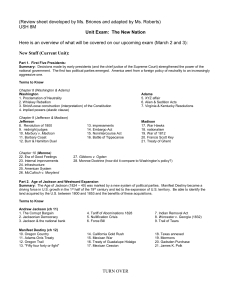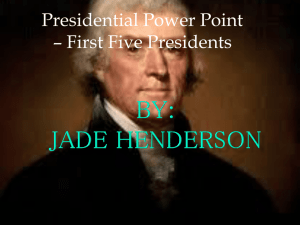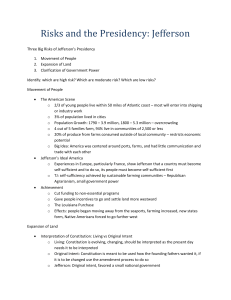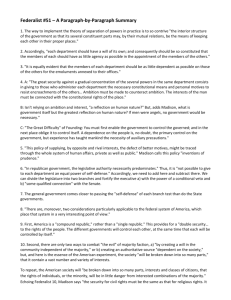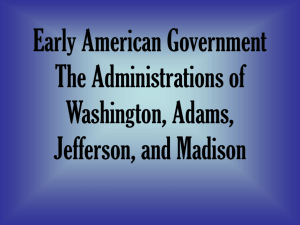Note-Taking Guide
advertisement
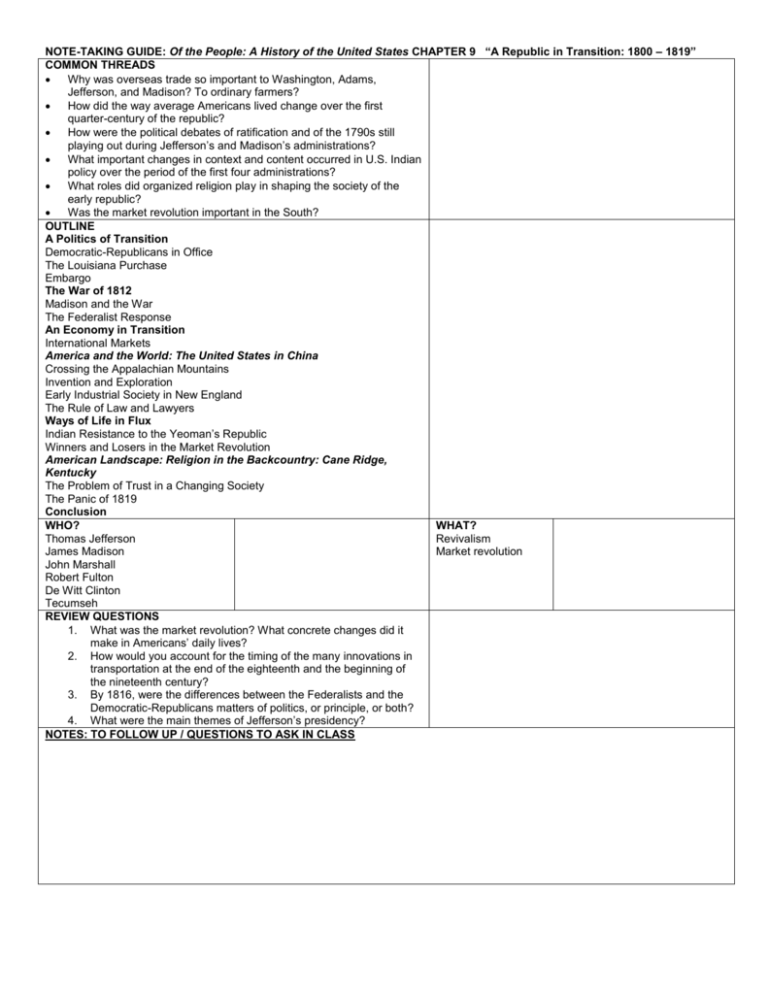
NOTE-TAKING GUIDE: Of the People: A History of the United States CHAPTER 9 “A Republic in Transition: 1800 – 1819” COMMON THREADS Why was overseas trade so important to Washington, Adams, Jefferson, and Madison? To ordinary farmers? How did the way average Americans lived change over the first quarter-century of the republic? How were the political debates of ratification and of the 1790s still playing out during Jefferson’s and Madison’s administrations? What important changes in context and content occurred in U.S. Indian policy over the period of the first four administrations? What roles did organized religion play in shaping the society of the early republic? Was the market revolution important in the South? OUTLINE A Politics of Transition Democratic-Republicans in Office The Louisiana Purchase Embargo The War of 1812 Madison and the War The Federalist Response An Economy in Transition International Markets America and the World: The United States in China Crossing the Appalachian Mountains Invention and Exploration Early Industrial Society in New England The Rule of Law and Lawyers Ways of Life in Flux Indian Resistance to the Yeoman’s Republic Winners and Losers in the Market Revolution American Landscape: Religion in the Backcountry: Cane Ridge, Kentucky The Problem of Trust in a Changing Society The Panic of 1819 Conclusion WHO? WHAT? Thomas Jefferson Revivalism James Madison Market revolution John Marshall Robert Fulton De Witt Clinton Tecumseh REVIEW QUESTIONS 1. What was the market revolution? What concrete changes did it make in Americans’ daily lives? 2. How would you account for the timing of the many innovations in transportation at the end of the eighteenth and the beginning of the nineteenth century? 3. By 1816, were the differences between the Federalists and the Democratic-Republicans matters of politics, or principle, or both? 4. What were the main themes of Jefferson’s presidency? NOTES: TO FOLLOW UP / QUESTIONS TO ASK IN CLASS
